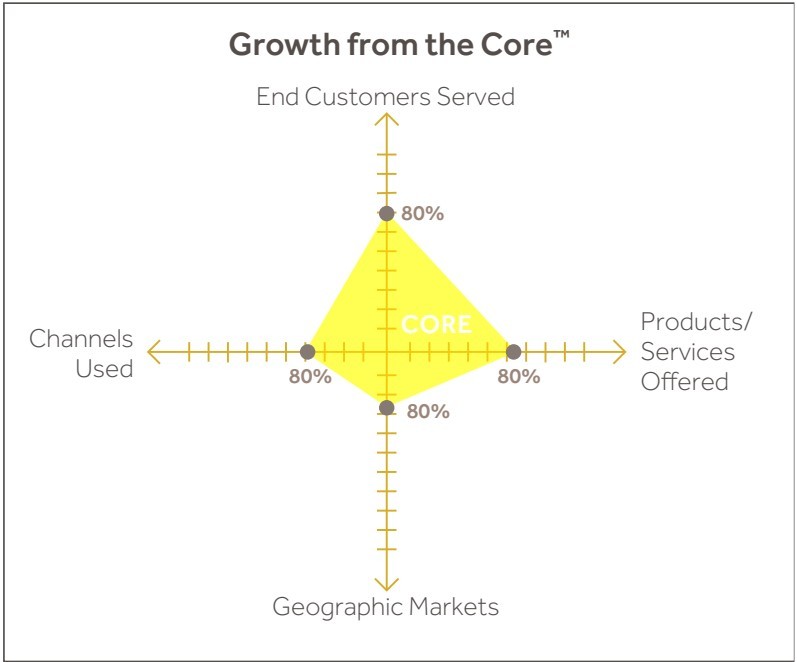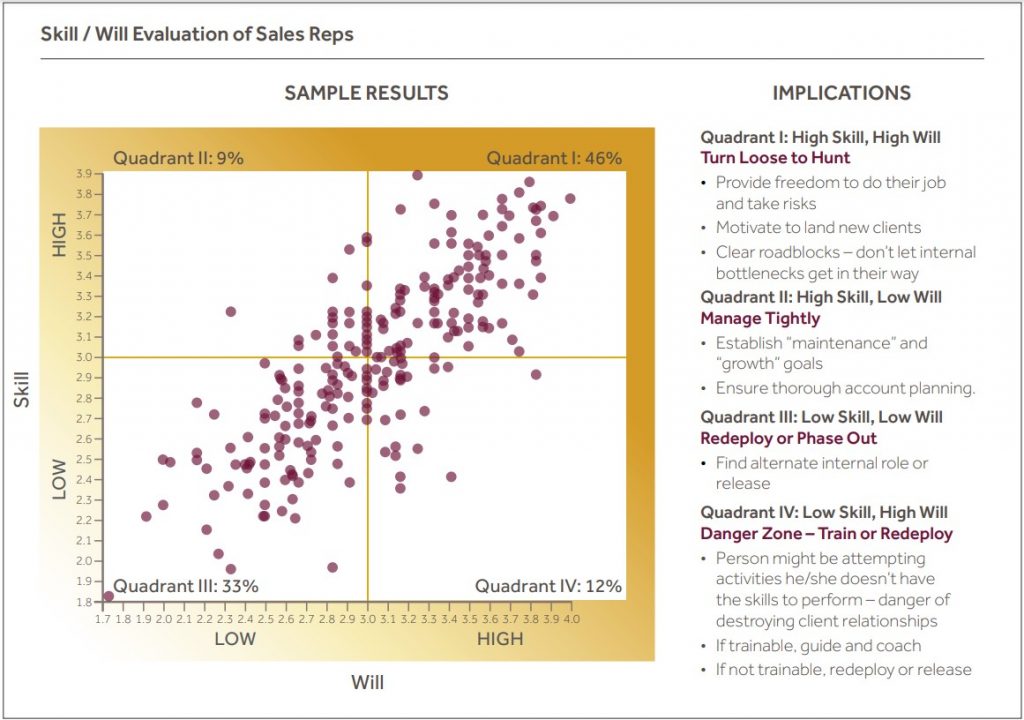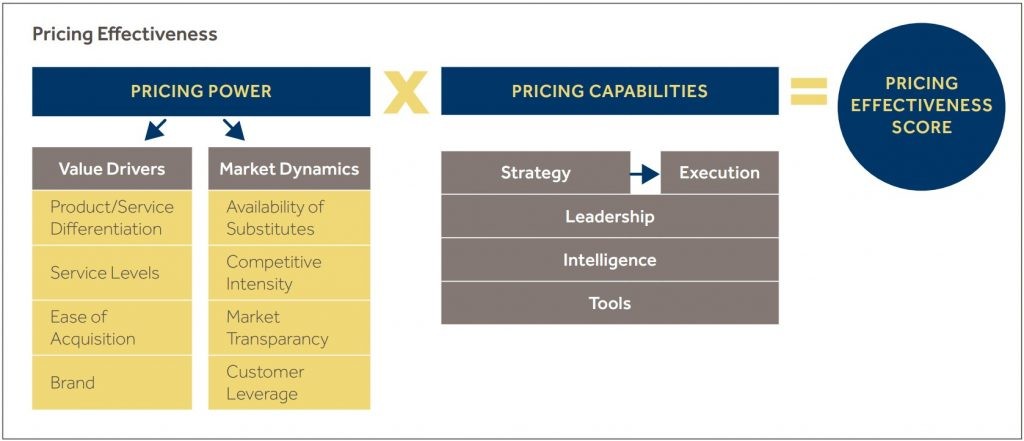Ten Behaviors Successful B2B Companies Use to Accelerate Growth
The “old school” sales and marketing practices of five years ago are no longer good enough to capture market share from your competitors. While you were working hard to make your revenue numbers during the last several years, the bar got raised for commercial excellence within most B2B industries.
We studied the growth performance of over 400 B2B companies operating in North America, Europe, and Asia including software, technology services, business services, manufacturing, distribution, medical device, and healthcare services companies.
We found ten common behaviors among the high performers that produced an acceleration in their profitable revenue growth. Not only have these behaviors enhanced their own company’s performance but together they have raised the standard for measuring commercial capabilities and operational excellence for all B2B companies.
These high-performing B2B companies demonstrate the following characteristics:
1. Focus On The Core Of Their Business
These companies take the time to define the core of their business and they aim the commercial organization at this core
- Every company has a core as defined as the set of end customers, products/services, geographies, and channels that represent roughly 80% of future profits
- As companies attempt to grow, they frequently diffuse their attention across an ever-broader range of customers, products, geographies, and channels. This makes it difficult for salespeople to focus on the core that will generate the future success of the business.
- Over time, sales organizations become over-resourced in old opportunity areas while not being able to “afford” resources in new, promising areas.
- The high-performing companies are clear about their core and periodically redirect resources from the low opportunity to high opportunity areas. They allocate the vast majority of management time, expenses, and capital to these aspects of the business

2. Dramatically Improve Sales Productivity
High-performing B2B companies find ways to dramatically increase the productivity of their sales organizations (think doubling productivity). These companies realize the following:
- Their sellers were only spending 25%-40% of their time selling. The rest of their time was spent performing customer service and administrative tasks. Selling time literally can be doubled by eliminating, restructuring, or shifting these tasks to others.
- High-performing companies have shifted from a “self-directed” sales model to a “company-directed model”. This means that companies are creating playbooks, defining a sales cadence, and outlining activities expectations more clearly.
- Also, these high performers realized their seller productivity is not just a function of the sellers’ skills and behaviors … it’s also a function of the surrounding ecosystem in the company including lead generation support provided by marketing, pre-sales support, and post-sales support, and others. Also, some corporate functions outside of the commercial organization were found to be unintended sales drags (such as the contracting organization and product implementation teams).
- There is a fundamental shift occurring in buyer behavior in most B2B industries— buyers want to perform many of the traditional selling tasks themselves such as order entry and product research rather than interfacing with a salesperson. This results in decreased time burdens on sales reps but requires a thoughtful reconfiguration of the interface between sales and customers.
- This seems to be only the tip of the iceberg in sales productivity improvements with much more to come. Forester has predicted that 15% to 33% of sellers will be eliminated by 2020 (depending on whether they are order takers, explainers, or navigators). This will necessitate a reconfiguration of the sales to customer interface across many companies.
3. Activate First Line Sales Supervisors
First-line sales supervisors are the most important organizational layer—they guide their pod of sales reps but also implement corporate-level priorities such as new products, new markets, new playbooks, and new sales tools. Despite this, most sales supervisors are inadequately trained, undisciplined, and misallocating their time.
- Many of these supervisors are high-performing sales reps promoted into this role without adequate training or tools to effectively perform in this role. Therefore, they remain great salespeople but not very good managers
- Most of these supervisors are spending all their time getting large opportunities over the goal line and dealing with administrative duties. While noble, this leaves little time for coaching sales reps to optimize their performance
- The high-performing companies we studied focus first on upping the game of sales supervisors and then having them help improve sales rep performance
4. Establish A Culture Of Growth In The Entire Company
Growth isn’t solely the responsibility of the commercial organization. The entire company needs to be supporting and contributing to growth. The high-performing companies discovered that a culture of growth is required to achieve and sustain growth targets. This growth culture is apparent in the following ways:
- They establish a culture of calling out obstacles to growth—those steps/people who seem to inappropriately slow response times and burden the sales process
- They compensate salespeople for growth, not just for flat revenue/sales
- They exit salespeople who continuously can’t grow the size and contribution of their customer portfolio
5. Upgrade Sales Talent
Many of the B2B companies we studied discovered that between 33%-50% of the people in their commercial organization lacked the skill and/or will to effectively execute their role. When you pause to think about that, it’s pretty alarming.
For the high-performing companies, this required two primary actions:
- Tough-minded assessment of talent—these organizations realized they didn’t have a way, other than commission plans and incentive programs, to evaluate talent in their commercial organization. Do these people have the skills and will to be successful over the long run? If not, can they be enhanced with training and coaching or are they unlikely to fit in the future organization? Weak sales performers are often retained because they are viewed as better than having no one in the spot. The high-performing organizations realized that over time, this resulted in continuous mediocrity in the commercial organization.
- Changes in the way talent in the commercial organization is sourced, evaluated, offered, cultivated, onboarded, made successful, and retained. This is a full lifecycle approach that is required to sustain improvements in talent and performance.

6. Demand Stronger Contributions From Marketing
Most B2B marketing organizations are weak because they aren’t answering the key strategic questions for the business. 30% of the high-performing companies have exited their CMO
in the last two years because they lack the skills necessary to answer the following four questions:
- Where are the sweet spots in the market where the company can achieve a higher win rate and capture premium pricing opportunities?
- How should the selling approach/messaging be modified to be most successful in each of the attractive market segments?
- How can marketing generate a higher quality (not just a higher quantity) of new sales leads?
- What is the size of the market opportunity in targeted geographies and segments so this information can be used to size the sales organization and to create the proper coverage model?
7. Monitor Activities Not Just Outputs
The high-performing businesses shifted from myopically measuring output metrics (such as revenue/sales generated) to measuring both output metrics and activity metrics. The activity metrics are leading indicators such as new leads generated, introductory meetings held, and proposals/ quotes submitted. They give greater insight into sales behaviors by sales reps and provide insight into likely future outputs.
8. Optimize Pricing Performance
High-performing B2B companies understand the power of pricing as an EBITDA improvement lever and they have become good at it.
- Sales reps are trained on how to sell value/differentiation and how to capture premium pricing opportunities
- They have strong data analytics to understand and monitor pricing deviations, the full cost to serve, and pocket margins

- They use pricing tools to help reps understand price points that are winning/losing in the market
- Where applicable, they have designed a pricing structure that separately captures value from each component of the company’s value proposition
- They have a single person in the company responsible for pricing—a “pricing czar” who develops pricing structures, processes, tools, and performance analyses
- These companies closing connect sales incentives with pricing strategies—they only pay sales reps for the outcomes that matter to the company such as growing the total gross margin contributed by their customers
9. Properly Design The Commercial Organization
High-performing companies step back every year or two to reevaluate their commercial organizational design to ensure it optimizes market success.
- Most sales organizations are a product of history and don’t rethink themselves with enough frequency
- The high-performing B2B companies rethink topics such as the hunter/farmer structure, key account managers, inside vs. outside sales, sales operations, sales enablement, pre-sales, post-sales, implementation teams, and other resources
- These companies also realize that many sales reps are assigned to too many accounts and many of these accounts get little contact from the company as a result. The high-performing companies model sales team sizing based on customer targets, anticipated proposal volumes, win rates, deal sizes, and similar factors.
- In these new organization designs by high performers, sales operations is moving from “backstage to spotlight” including capabilities such as sales analytics, sales tools, sales processes
10. Use The “Give/Get” Approach To Implementing Change
High-performing B2B companies have found a more constructive way of implementing change in their commercial organizations
- They only implement 2-4 changes at once and make sure they get an “A” grade rather than implementing many changes and getting “C’s or D’s”
- They also think about change programs from the perspective of the individuals being impacted—some are positive changes, and some might be viewed as negative changes but are desired by the company anyway. For example, some positive changes for sales reps might be freeing up their time to focus on selling and providing them with higher-quality new leads. Changes that might be viewed more negatively are requesting greater discipline in updating the CRM and following a standard sales playbook. The high-performing companies we studied think about change programs in terms of “give/get”—the company does some good things for you and you do some good things for the company.


